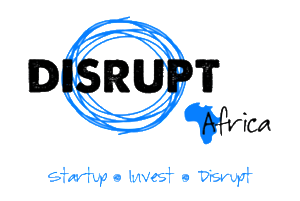More than 70 per cent of fintech venture funding in Africa has gone to retail payment and consumer credit startups, writes Ameya Upadhyay, an investments principal at Omidyar Network.
This is nothing new: payments are ubiquitous and digitising them clearly saves time and money. In turn, payments startups become attractive to venture funds looking for businesses that solve a real problem and can scale. Consumer credit, particularly small-dollar or “nano-credit”, is a natural adjacency for payment companies and investors. Loans can be disbursed and repaid digitally, payment data can be used for underwriting, and interest rate spreads are higher than transaction commissions.
While payments startups are easy to start, the market is driven by network effects, and therefore tends to move toward oligopolies. Alipay and WeChat’s duopoly in China, and M-Pesa’s monopoly in Kenya, are two examples. Further, both payments and nano-credit are easily commoditised. When compared to products likes savings, insurance, and pensions, they are more transactional in nature, requiring a relatively low level of trust and engagement between providers and consumers. This makes them easier to sell but harder to differentiate. We call these products “fast money”.
Many markets in Africa are maturing and large players are establishing dominant positions in the fast money segment. But investors seeking high potential startups should look beyond retail payments and nano-credit, to innovators building high-engagement or “slow money” products, such as micro, small, and medium enterprises (MSME) credit, savings, investments, insurance, and pensions.
The cone of opportunity
The very nature of payments make the market prone to network effects. The natural owners of payment products are companies with established brands, a captive customer base, and another core service into which they can embed payments. Globally, technology platforms like WhatsApp and WeChat have started offering payments. In Africa, mobile network operators (MNO) have successfully embedded payments for their telephony customers. For these incumbents, payments are a marginal cost business, and acquisition costs are much lower, given their readily accessible customer base.
Digital nano-credit has also expanded fast on the back of retail payments. While not dependent on network effects, this market is prone to be captured by a combination of banks, which have access to cheap deposit capital on the back end, and large consumer companies (MNOs and Internet giants for example) that have captive customers on the front-end. We are already seeing this play out in Africa with M-Shwari, M-Pawa, and similar services.
As these markets mature, the potential for pure-play payments or nano-credit startups to scale and generate returns diminishes. Of course, this is a sweeping generalisation, particularly for a continent with the dizzying diversity of Africa. There are and will be exceptions: Branch and Tala for example, have shown initial traction in Kenyan nano-credit market. However, due to the reasons mentioned above, it seems unlikely that these exceptions become the norm.
Invest selectively in payments and credit infrastructure
While the direct-to-consumer space in payments and nano-credit is maturing, the infrastructure supporting these businesses is broken. Take payment infrastructure for example. Less than five per cent of mobile payments are made to merchants because most merchants lack the means to accept digital payments. Person-to-person (P2P) interoperability is limited to a few markets. Cash-in/cash-out infrastructure is underdeveloped, particularly in rural areas. To address these systemic issues, we invested in companies like Paga, Zoona, and Flutterwave, and continue to look for game changers.
Analogous problems plague the credit ecosystem. Access to wholesale financing is severely limited as banks are reluctant to lend to smaller lenders and debt capital markets are virtually non-existent. We invested in Lendable to address some of these gaps, and have our eye out for other infrastructure players.
Focus on slow money products: savings, investments, insurance, pensions
Unlike fast money offerings, many slow money products require customers to pay upfront and promise returns later. As such, they are harder to sell. Above all, they depend on a high degree of trust between the consumer and provider.
At the same time, slow money products tend to have a deeper impact on an individual’s life. This is obvious when comparing a pension product with a US$50 loan. These are the same reasons that make slow money products stickier and more defensible.
While the uptake of insurance, pensions, investments, and savings has lagged behind, that is likely to change. Innovations in product design and distribution based on behavioral insights can help drive mass market adoption. For example, startups like PiggyBank and CowryWise in Lagos are automating regular savings transfers for their customers. Pula offers free crop insurance to farmers. Premiums are paid by seed and fertiliser companies to gain a competitive advantage in a crowded market. Effectively, Pula converts intangible insurance premiums to a more “present” spend: seed purchase.
Due to the complexity in product design, we think that “co-opetition” between incumbents and startups will be the norm in this space. Large consumer platforms may prefer to distribute products designed by innovative startups. Many examples exist already, particularly in the insurance space: Telcos distribute micro-insurance products designed by innovative companies like MicroEnsure and BIMA, while insurance companies carry the risk.
These are just a few examples of the kinds of businesses that we believe present the highest potential for combining impact with returns.


